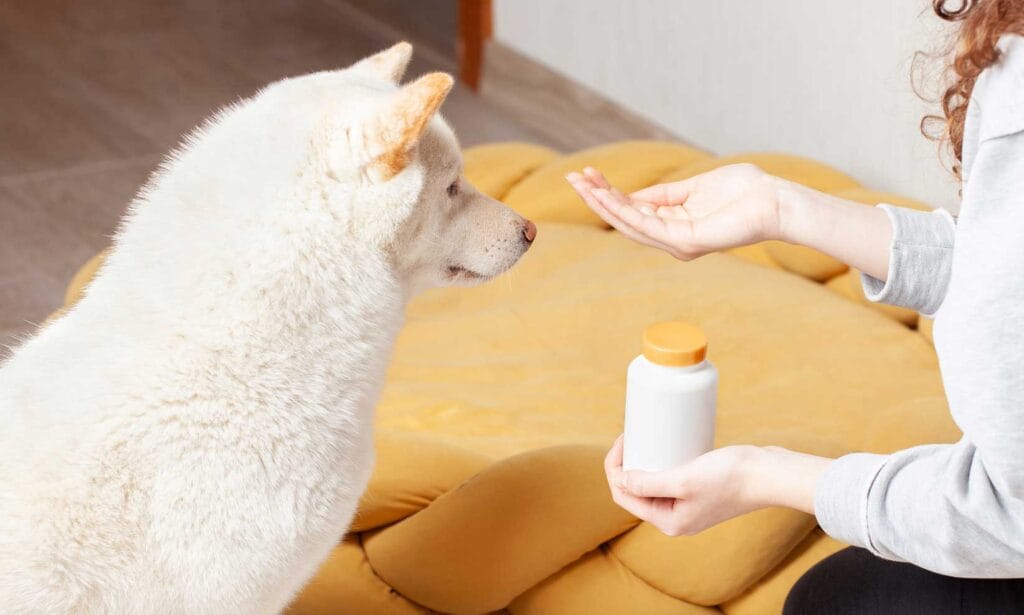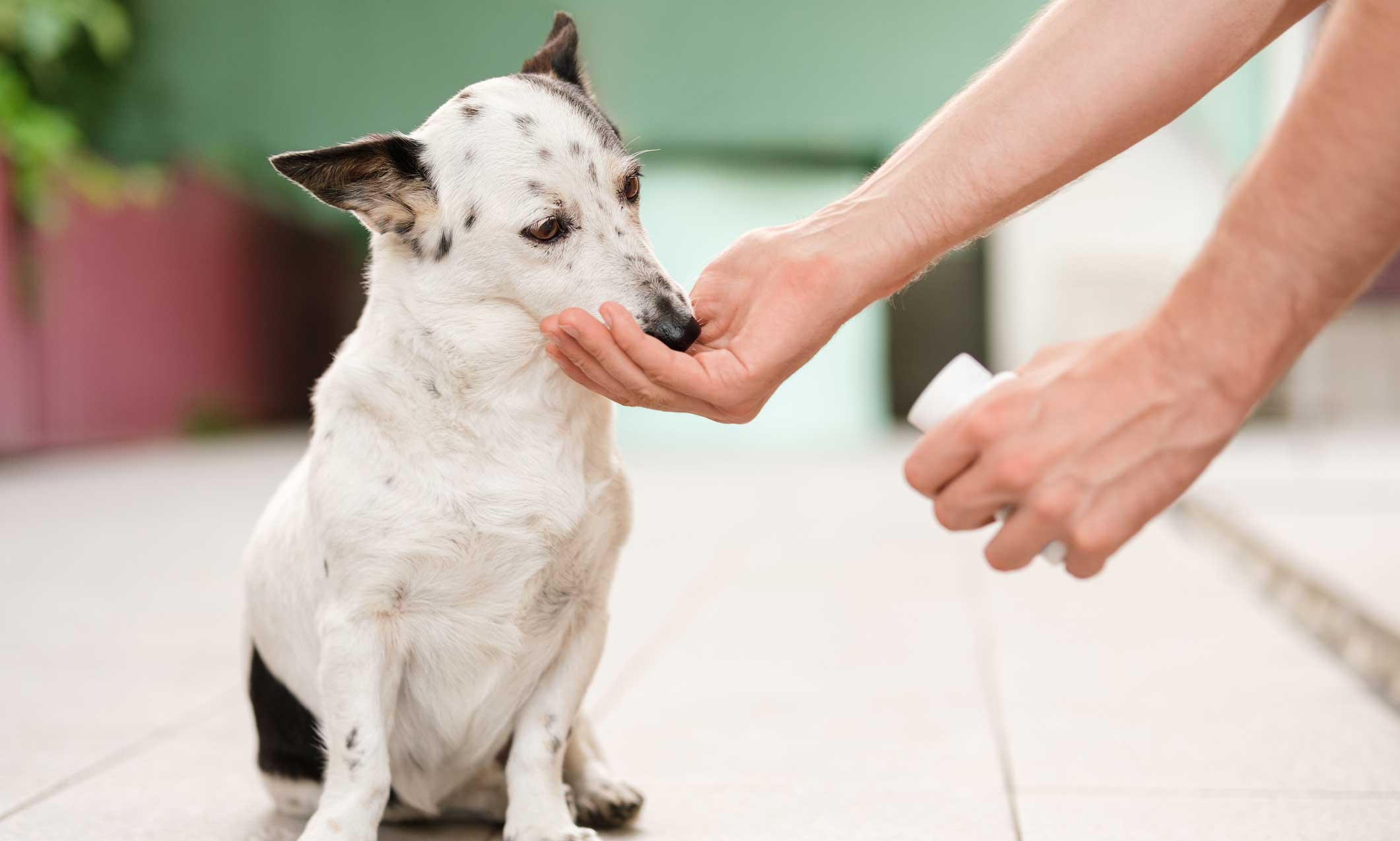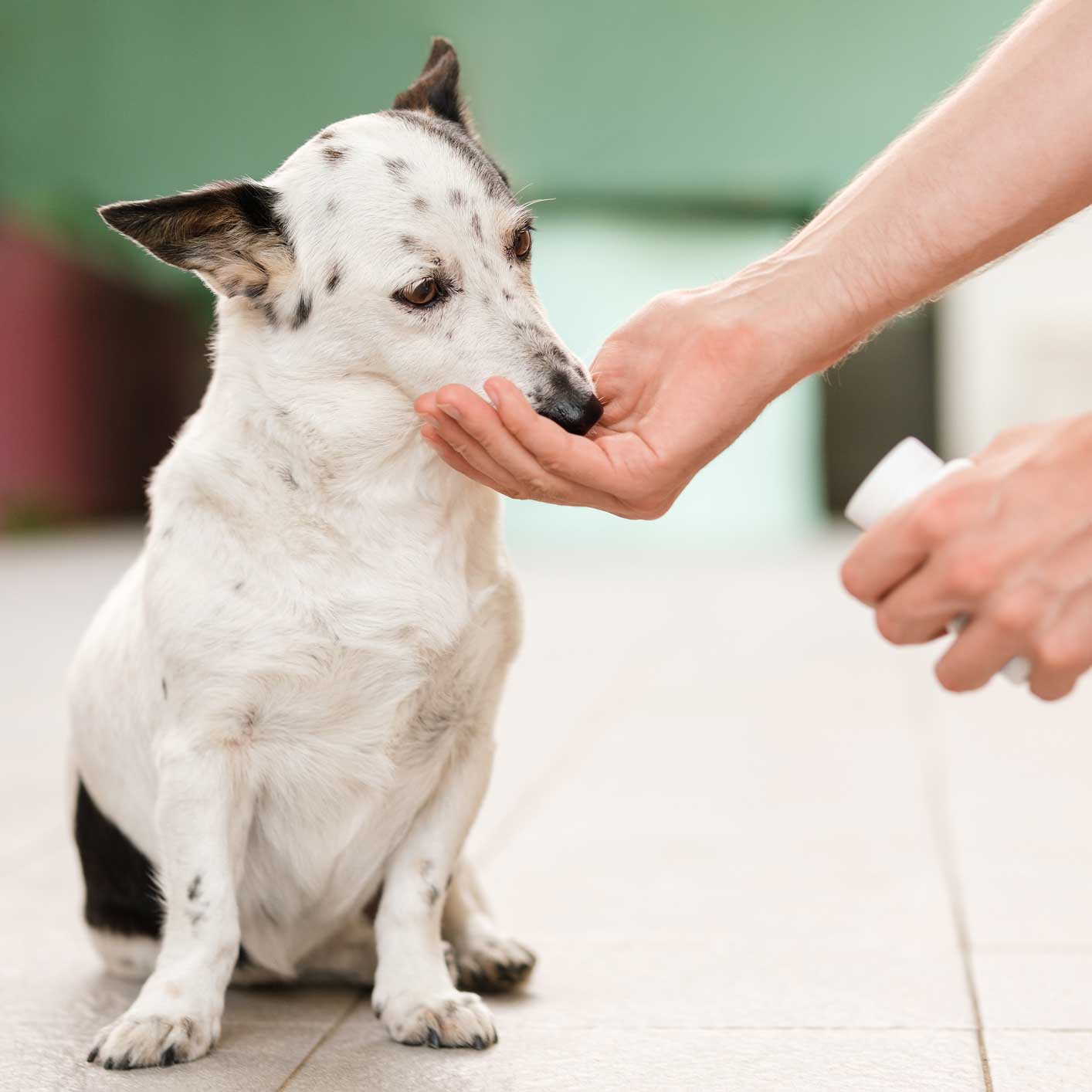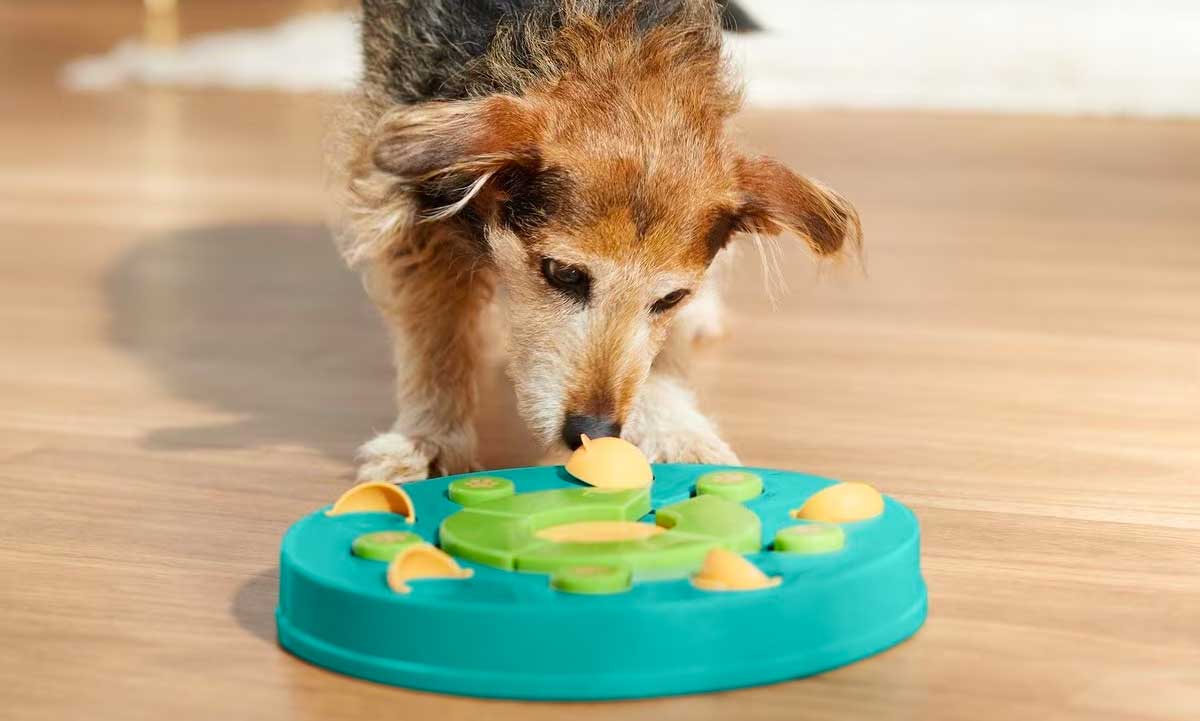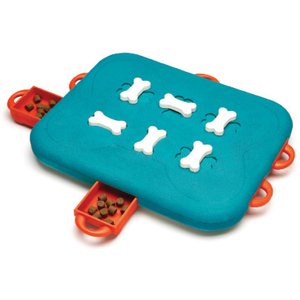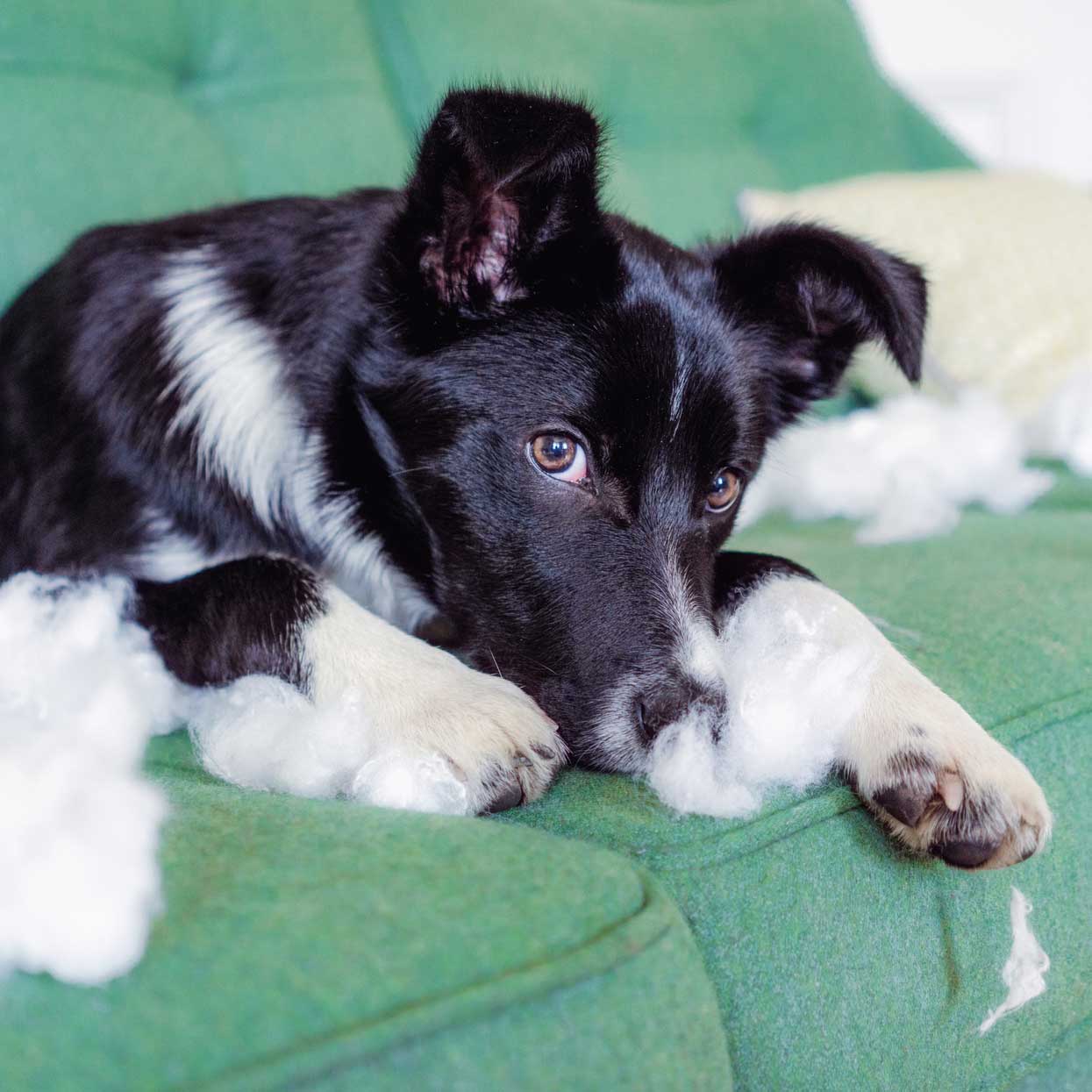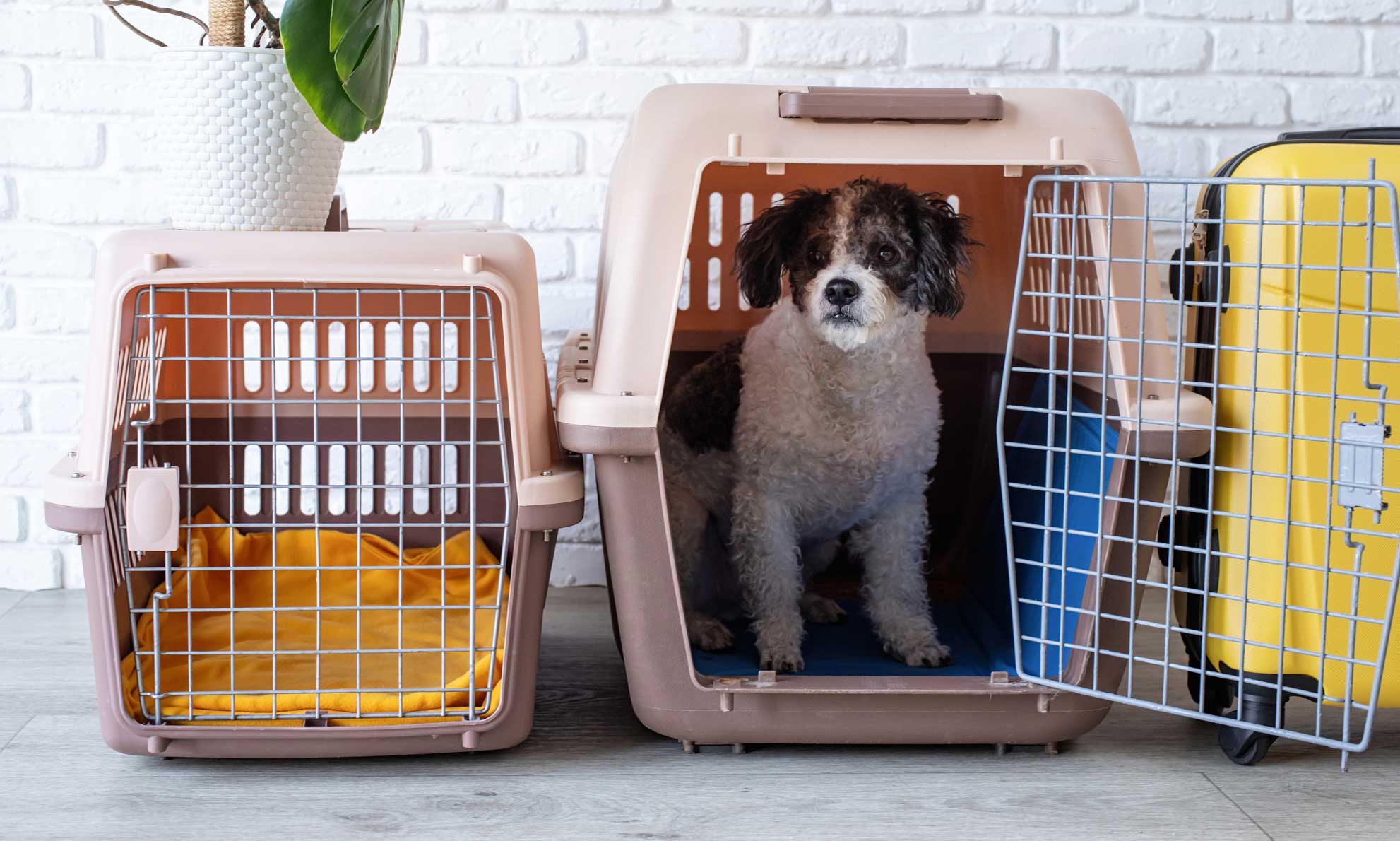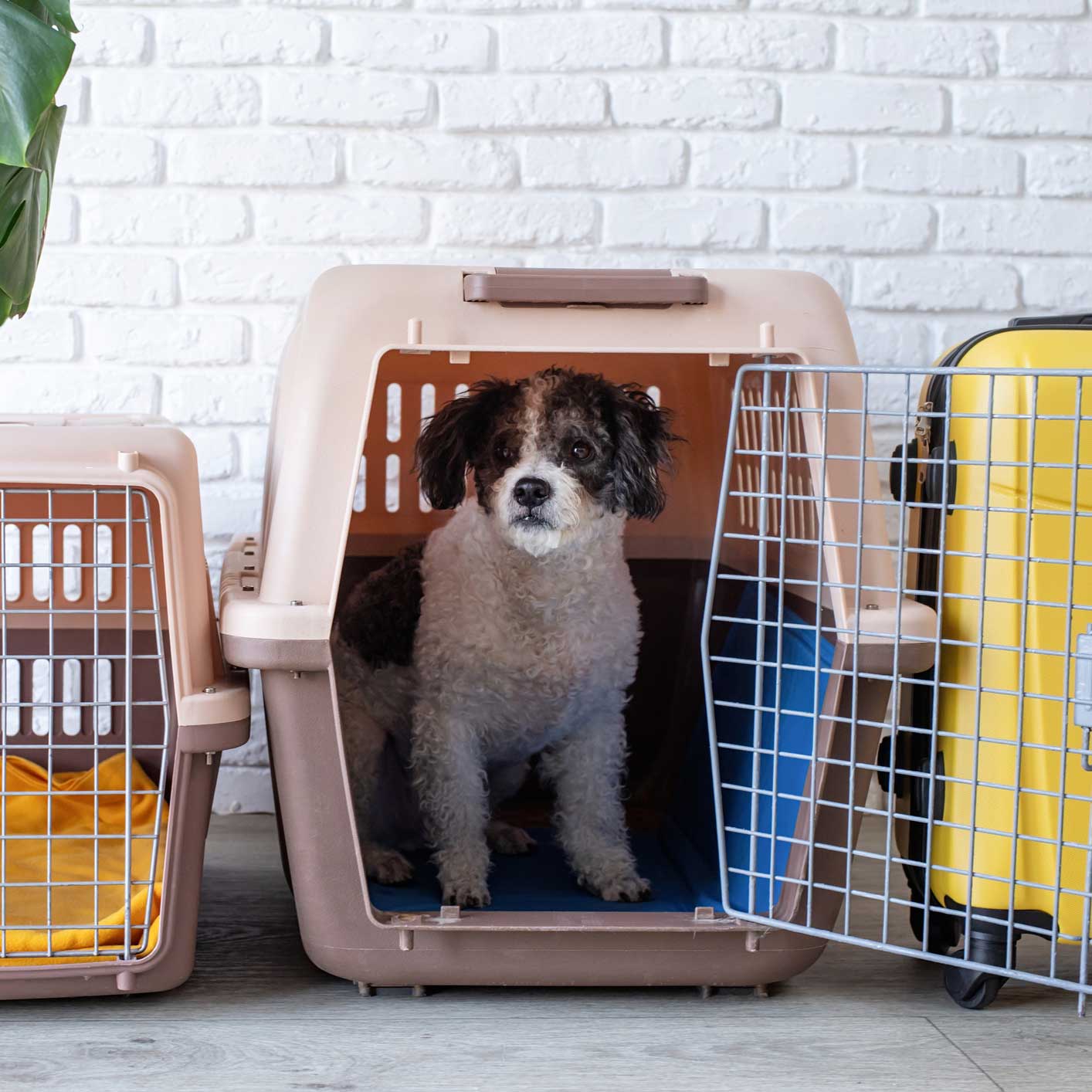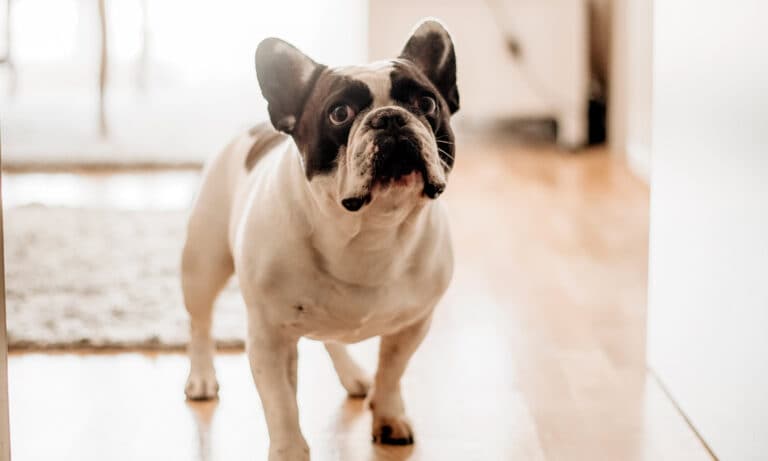We humans are no strangers to anxiety, and unfortunately, we’re not the only ones who have to deal with its unpleasantness. Our furry friends can experience all sorts of anxiety disorders, too. Situational anxiety, generalized anxiety, separation anxiety—our dogs can have it. And sometimes what we perceive as behavioral issues are actually the result of an anxious dog.
While behavioral modification is almost always the best, vet-recommended first step to helping alleviate your pup’s anxiety, sometimes anxiety meds are necessary. But when should we turn to meds for our super-anxious pup? And what do we, as pet parents, need to know about these anxiety medications?
We talked to Dr. Sara Ochoa, DVM, a veterinarian at Animal Hospital of West Monroe in West Monroe, Louisiana to learn all about the 10 most common anxiety meds for dogs, as well as the signs of anxiety and other ways you can help your anxious dog.
In This Guide:
10 Common Anxiety Meds for Dogs
Maybe your dog experiences situational anxiety, like panicking during car rides or thunderstorms. Or perhaps your dog feels serious separation anxiety every time you leave the house.
If your dog has anxiety, and behavior modification just isn't working on its own—or the anxiety is too serious to tackle with behavior modification at this point—it’s probably time to talk to your vet about anti-anxiety medication options.
Some of the dozen medications below are specifically intended to treat anxiety. Others were created for different medical conditions but can be used off-label as dog anxiety medications. This means that even though the medications aren’t FDA-approved as anxiety meds for dogs, they are readily utilized in the veterinary field, and vets can legally prescribe certain human drugs for use in animals in certain circumstances. This is called extra-label or off-label use because this use is not described on the drug label. Speak with your vet about whether any of these medications are right for your pet.
Dr. Ochoa considers the following 10 anxiety meds when prescription medication for anxiety treatment becomes necessary.
1Alprazolam
What is it? Alprazolam is a benzodiazepine (sedative).
Common brand names: Alprazolam Intensol, Niravam, Xanax
Generally used to treat: moderate to severe anxiety; used on as-needed basis alone (e.g., to treat anxiety caused by thunderstorms) or in conjunction with a daily anxiety med
Possible side effects: lethargy, sedation, incoordination, increased appetite
2Amitriptyline
What is it? Amitriptyline is a tricyclic antidepressant.
Common brand names: Elavil, Levate
Generally used to treat: behavior disorders such as generalized anxiety disorder and separation anxiety
Possible side effects:
- Common: constipation, drowsiness/sedation, vomiting/diarrhea, urinary retention
- Less common: hyperexcitability, irregular heart rhythms
- Rare: seizures
Learn more about amitriptyline.
3Buspirone
What is it? Buspirone is in the azaperone class of anti-anxiety medications.
Brand names: BuSpar, Bustab
Generally used to treat: behavior disorders such as social anxiety, mild generalized anxiety, phobias
Possible side effects: decreased appetite, vomiting, agitation (pacing), grogginess, slow heart rate
Learn more about buspirone.
4Clomipramine
What is it? Clomipramine is a tricyclic antidepressant.
Brand names: Anafranil, Clofranil, Clomicalm, Clopram, Clopress, Equinorm, Hydiphen, Maronil, Novo-Clomipramine, Placil, Tranquax, Zoiral
Generally used to treat: separation anxiety in tandem with behavior modification, generalized anxiety, storm phobia, some noise phobias, compulsive behaviors
Possible side effects:
- Common: constipation, diarrhea, dry mouth, elevated liver enzymes, lack of appetite, tiredness, vomiting
- Serious: agitation, fast heartbeat
Learn more about clomipramine.
5Diazepam
What is it? Diazepam is a benzodiazepine.
Common brand name: Valium
Generally used to treat: anxiety, panic disorders, noise aversion, fears phobias
Possible side effects:
- Common: increased appetite, lack of coordination, sleepiness, weakness
- Less common: aggression, agitation
Learn more about diazepam.
6Fluoxetine
What is it? Fluoxetine is a selective serotonin reuptake inhibitor (SSRI), which increases serotonin levels in the brain.
Brand names: Prozac, Reconcile, Sarafem
Generally used to treat: anxiety, separation anxiety, compulsive behaviors, noise phobias, aggressive behavior
Possible side effects:
- Common: decreased appetite, sleepiness, constipation
- Less common: diarrhea, hypersalivation, lack of coordination, panting, restlessness, shaking, vomiting, weight loss, whining/vocalization
- Serious: seizures, aggression, excessive/persistent vomiting
Learn more about fluoxetine.
7Gabapentin
What is it? Gabapentin is an anticonvulsant (anti-seizure) analgesic medication.
Brand names: Aclonium, Equipax, Fanatrex, Gabarone, Gralise, Neurontin, Progresse
Generally used to treat: anxiety
Possible side effects: lack of coordination, sleepiness, sedation
Learn more about gabapentin.
8Paroxetine
What is it? Paroxetine is a selective serotonin reuptake inhibitor (SSRI) antidepressant, which increases serotonin levels in the brain.
Brand names: Brisdelle, Paxil
Generally used to treat: aggressive behaviors, anxiety, obsessive-compulsive behaviors
Possible side effects:
- Common: decreased appetite, sleepiness
- Less common: constipation, diarrhea, drooling, urine holding (urine retention), panting, restlessness, sleeplessness, vocalization, vomiting
- Serious: aggressive behavior, over-excitement, persistent lack of appetite
9Sertraline
What is it? Sertraline is a selective serotonin reuptake inhibitor (SSRI), which increases serotonin levels in the brain.
Common brand names: Zoloft
Generally used to treat: generalized anxiety, separation anxiety, fear-based aggressive behaviors, thunderstorm phobia
Possible side effects: diarrhea, irritability, lack of appetite, panting, shaking, difficulty sleeping, vomiting
Learn more about sertraline.
10Trazodone
What is it? Trazodone is a serotonin antagonist/reuptake inhibitor (SARI) antidepressant, which increases the serotonin levels in the brain.
Common brand names: Desyrel, Oleptro
Generally used to treat: anxiety disorders, including separation anxiety, phobias
Possible side effects: lethargy, loss of muscle control (ataxia), sleepiness, vomiting, diarrhea, seizures, increased skin sensitivity (hyperesthesia), dilated pupils, vocalization (whining, crying), excessive drooling, trouble breathing
Learn more about trazodone.
Other Ways to Help Treat Dog Anxiety
The focus is almost always behavioral modification, which Dr. Ochoa highly recommends.
You can also consider gear, toys and supplements. Let’s start with behavior modification.
Behavior modification
Behavior modification is a way to help reduce unwanted behaviors in dogs through training techniques. The goal is to modify the behaviors to a lower level that’s more manageable to the pet parent and the dog, or to eliminate the behaviors entirely.
“I always recommend starting with behavior modification techniques before jumping into giving anxiety medication,” Dr. Ochoa says. “A well-designed plan for behavior modification has been shown to reduce anxiety in pets without the need for drugs.”
She explains the following approaches to help an anxious dog:
1Desensitization
Desensitization is the process of “gradually exposing the dog to the fear-inducing stimulus in a controlled and systematic manner,” Dr. Ochoa says.
The goal of desensitization is to lower the dog’s anxiety by increasing their exposure to a stimulus that triggers their anxiety, she says. The key is keeping the exposure below the dog’s fear threshold.
Desensitization should only be done under the guidance of a professional dog trainer. It’s a process that requires patience and consistency.
2Counterconditioning
The purpose of counterconditioning is to change the dog's emotional response to the stimulus that causes fear by teaching your dog to associate it with something positive.
Counterconditioning is done by pairing something your dog enjoys, like treats or praise, with the fear-inducing stimulus. As you continue this training, your dog will learn to associate the stimulus that previously caused them to experience fear and anxiety with positive experience. Over time, counterconditioning should reduce your dog’s anxiety.
3Positive reinforcement
Positive reinforcement is “a crucial aspect” of behavior modification, Dr. Ochoa says.
To engage in positive reinforcement, reward your dog’s relaxed and calm behaviors with praise and treats. This reinforces your dog’s ability to remain calm in situations that cause anxiety.
Environmental enrichment and modifications
Help alleviate your dog’s anxiety by creating a calm and safe environment.
- Create a designated "safe space" or a crate. Make sure your anxious dog has comfortable bedding. Make this a place where they can go when stressed.
- Try calming pheromone differs, sprays or collars.
- Play soothing music.
- Use a white noise machine.
“Providing a stimulating and enriched environment can help alleviate anxiety in dogs,” Dr. Ochoa explains. You can use puzzle feeders and interactive toys for mental stimulation.
You can also ensure your dog gets enough exercise to release extra energy.
Training and obedience
Being consistent about training your dog. Doing obedience work is also helpful because it will make your dog more confident.
“Teaching basic obedience commands and practicing them regularly can provide structure and predictability, which can be comforting for anxious dogs,” Dr. Ochoa explains. “Training can also help redirect their attention and focus away from anxiety triggers.”
Relaxation techniques
Teach your dog new commands such as "settle" or "calm.” Use praise or treats as positive reinforcement. This can “help your dog associate relaxation with rewards,” Dr. Ochoa says.
Teach and practice relaxation techniques in a calm environment first. Then, when your dog has the hang of it, gradually begin to use them in situations that trigger your anxious dog.
Regular exercise
Physical activity helps to release natural mood boosters called endorphins, Dr. Ochoa says. These can help lower a dog’s anxiety level.
Toys, like puzzles
Toys aren't only for fun! Certain dog toys can help reduce a dog’s anxiety and offer comfort.
Others, like interactive puzzle toys or toys that dispense treats “engage the dog's mind, and help redirect their focus from anxious thoughts or behaviors,” Dr. Ochoa says.
Dr. Ochoa recommends the following toys for your anxious dog:
Calming vests
Anxiety and calming vests, like ThunderShirts, can help anxious dogs. The constant, gentle pressure these kinds of vests provide can have a calming effect on a dog in the same way swaddling a baby can relax them, Dr. Ochoa explains.
Calming treats
Lastly, you can try an over the counter, calming treat (like Zesty Paws Calming Bites) to help calm your anxious dog. Calming treats can be a very useful way to help alleviate stress-related behavior problems. Ask your vet which product would be most useful for your pup.
Signs of Anxiety in Dogs
Repeated urination on the kitchen floor, for example, can be a sign of anxiety in a potty-trained dog. Or, for anxious dogs who have noise phobias, you might find them hiding under the table. And these aren’t exactly things most anxious humans do. However, there are also medical reasons these behaviors may occur, so always check with your vet if your pet develops any sudden or new symptoms.
To better understand what dog anxiety looks like, Dr. Ochoa says to keep an eye out for the following signs:
- Excessive barking or howling, especially when alone
- Aggressive behavior towards people or other animals
- Restlessness such as pacing or trouble settling down
- Destructive behavior such as destroying property, digging holes, or chewing furniture or other objects
- Panting or pacing
- Excessive salivation
- Trembling or shaking, particularly when exposed to triggering situations or stimuli
- Hiding in secluded areas
- Seeking constant reassurance from their pet parents, often by remaining close or initiating physical contact
- Changes in appetite; either increased or decreased food intake
- Nausea or digestive issues
- Excessive licking or chewing
- Potty accidents indoors, even when fully house trained
- Escape attempts, including jumping over obstacles, digging under fences or running out of open doors
Causes of Anxiety in Dogs
Dr. Ochoa says the following are common causes of anxiety in dogs:
- Age-related anxiety can develop in some dogs as they get older
- Environmental factors, such as the addition or loss of another pet or a family member, a move to a new home or notable changes to the dog’s daily routine
- Genetic predisposition such as a dog’s breed or individual genetic makeup, which can increase their chances of developing anxiety disorders or anxiety-related behavior problems
- Health conditions such as arthritis, canine cognitive dysfunction syndrome and some thyroid conditions
- Lack of mental and physical stimulation
- Lack of socialization
- Negative reinforcement such as punishment-based training or harsh handling
- Separation from their pet parent
- Traumatic experiences such as accidents, abuse or natural disasters
FAQs About Anxiety Medication for Dogs
Q:
Is there a “best” prescription anxiety med you prefer?
Q:
Does Xanax work well for dogs?
A:
“The effectiveness of Xanax in treating a dog's anxiety depends on several factors, including the underlying cause of the anxiety, the severity of the symptoms, and the individual dog's response to the medication.
"While Xanax can help manage anxiety symptoms and promote a calmer state in many dogs, it may not be equally effective for every dog or every type of anxiety.
"For some dogs, Xanax may provide significant relief and help them cope with their anxiety triggers. It can help reduce excessive barking, destructive behavior, restlessness and other anxiety-related signs. However, other dogs may not respond as effectively, or may require additional or alternative treatments.”
Q:
Can dogs get “addicted” to anxiety meds like Xanax?
A:
“While medications like Xanax can be effective in managing anxiety in dogs, it's important to be cautious with dosage and frequency.
Dogs can become ‘addicted’ to these medications and experience withdrawal symptoms if they are suddenly stopped. This is why medication should always be given under the guidance of a veterinarian.”
Q:
What’s better: Trazodone or Xanax?
Assessing and addressing your dog’s anxiety is important for pet parents. It can feel overwhelming, but armed with the right information, you can talk to your vet about behavior modification, over-the-counter supplements and other products—and, finally, anxiety meds for dogs if nothing else works. View the Ultimate Guide to Calming Stressed Pets for even more calming solutions.
Expert input provided by Dr. Sara Ochoa, DVM, a veterinarian at Animal Hospital of West Monroe in West Monroe, Louisiana.
This content was medically reviewed by Chewy vets.
More on helping relieve your dog's anxiety:
Share:
